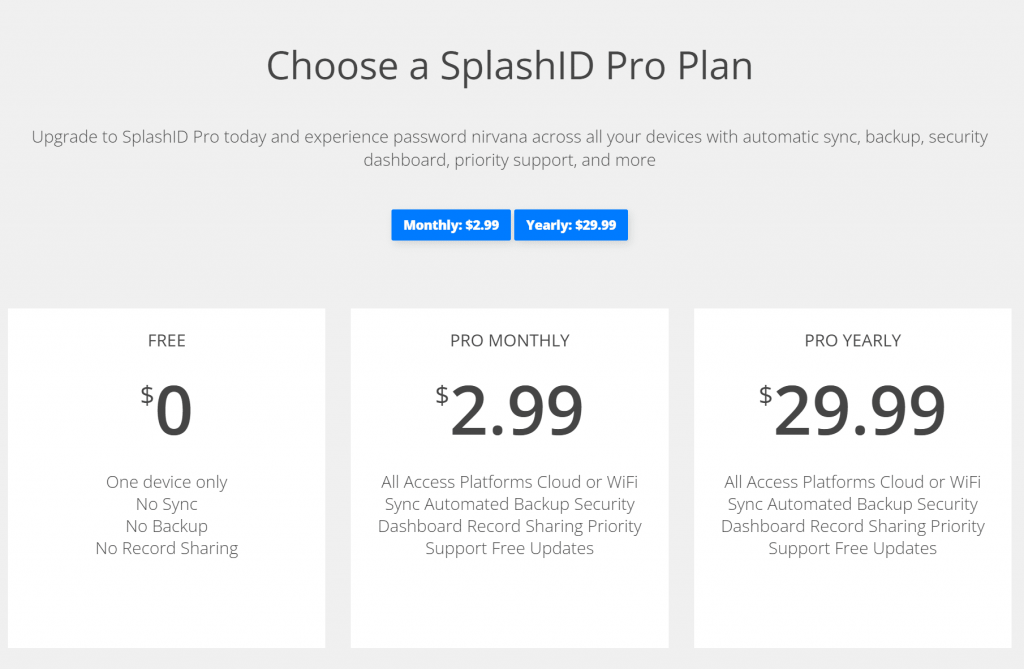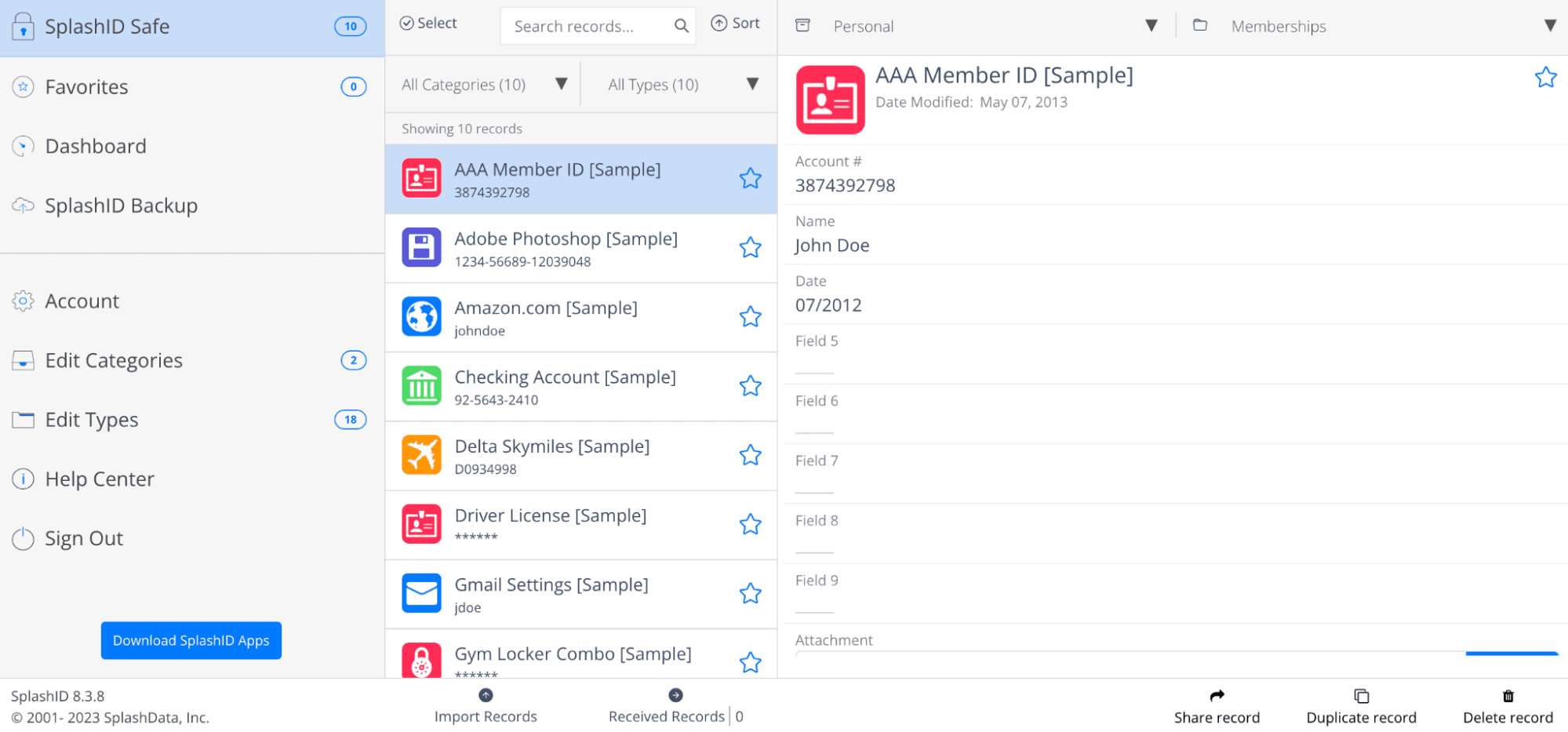While SplashID is mostly competent, the things it does well are done better by many of the top competing password manager services. The best reason to choose SplashID over anything else is its proprietary USB security key.
- Home
- / SplashID Review 2024: Expert Rated 3....
SplashID Review 2024: Expert Rated 3.6/5
We put SplashID password manager to the test for plan value, compatibility, features, and security. See why The Password Manager rated SplashID 3.6/5.

By: Gunnar KallstromHead of Information Systems and Cybersecurity Research
SplashID: A Quick Overview
Bottom line: At its $2.99 per month price point, SplashID isn’t as compelling as some of its competition. Against the likes of 1Password and Dashlane, SplashID has limited functionality due to its restricted autofill capabilities and outdated user experience (UX).
Who should choose SplashID? Those who are looking for a free password manager but prefer an older-style user interface.
Overall: (3.6)
SplashID struggled with its autofill capabilities and feels a tad undercooked for the price point. However, if you’re willing to look past these issues, it is still a reliable password manager.
- Plans and pricing: (4.0)
- Platform: (4.0)
- UX: (3.0)
- Form filling: (3.0)
- Security: (4.0)
- 2FA: (4.0)
You have numerous options when looking for the best password manager for your personal and business needs. I’ve tested and reviewed several popular password managers, and while SplashID can do the job, it falls short in some key areas of the experience.
Read on to learn about the pros, cons, features, and pricing of SplashID. And get answers to frequently asked questions about the password manager.
| SplashID standout features | |
|---|---|
| Key Safe |
|
| Best for | If you want a simple password storage platform on just one device |
| Promotion | 30-day free trial |
What Are the Pros and Cons of SplashID?
In a crowded market of feature-rich password managers, SplashID struggles to set itself apart. While it comes at a similar price point as competitors like 1Password and Dashlane, it’s still trying to play catch-up in terms of features and ease of use. While it does offer a fairly robust free version, it’s not the only free password manager in the game, with strong competition from services like RoboForm and LastPass. Here are the details of its pros and cons:
Pros
- Key Safe: While it’s not proprietary, SplashID offers Key Safe, a USB device that allows you complete control over where and when your data is stored.
- Free 30-day trial for the premium plan: Get to know SplashID’s premium features before committing to it.
- Platform compatibility: While SplashID’s platform compatibility is not vast, most people can use it on their platform of choice.
Cons
- Limited autofill functionality: SplashID’s autofill capabilities are stilted and difficult to use.
- Poor value proposition: It comes at a similar price point as some of the market’s best password managers — for what’s on offer, it may be playing in the wrong league.
- Limited free version: SplashID’s free version can only be used on one device and limits users to 25 vault entries.
Who Should Choose SplashID?
SplashID Plans and Pricing
Overall: (4.0)
SplashID offers a free and pro plan for $2.99 per month ($29.99, if a yearly subscription is purchased). Since the free plan can only be used on one device and limits entries to 25 items, most users will only find value in the pro plan.
| Free plan | Pro plan | |
|---|---|---|
| Price | Free | $2.99 per month |
| Best for | New users | People with multiple devices |
| Free trial | N/A | 30-day |
| Platform compatibility | Android, iOS, Windows, macOS, Web (Chrome, Edge, Firefox, Safari) | Android, iOS, Windows, macOS, Web (Chrome, Edge, Firefox, Safari) |
| Autofill capability | Yes | Yes |
| Guest accounts | No | No |
| Number of passwords | Limited to 25 records, including passwords | Unlimited |
| Password sharing | No | Yes |
| 2FA | Yes | Yes |
| Account recovery | Yes | Yes |
| Support types | Email, help center | Email, help center |
| Encryption | AES 256-bit | AES 256-bit |
| Reporting capabilities | No | No |
| Single sign-on (SSO) | No | No |
SplashID Platform Compatibility
Overall: (4.0)
SplashID is compatible with the following platforms:
- Step 1.Android
- Step 2.iOS
- Step 3.Windows
- Step 4.macOS
- Step 5.Web (Chrome, Edge, Firefox)
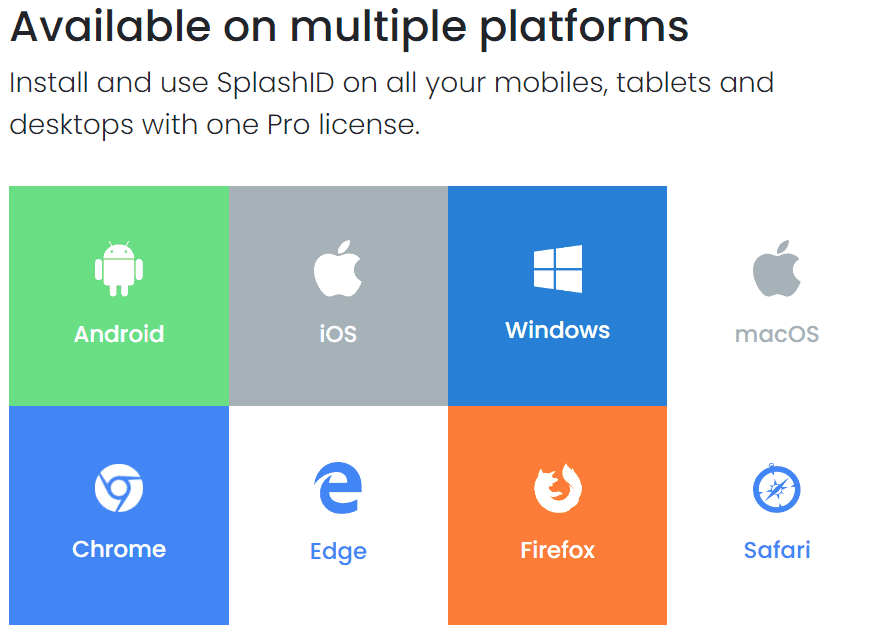
SplashID is compatible with a wide range of platforms to satisfy the needs of most people. That said, I generally look for password managers to be compatible with popular alternative browsers like Brave and Opera — and SplashID is not. However, I can’t fault it too much for sticking to the major players, and statistically, most people will be served by SplashID’s compatibility options.
SplashID UX
Overall: (3.0)
Most password managers utilize a clean, easy-to-navigate interface among their apps and browser extensions. I found SplashID to be a distinct outlier in this regard.
SplashID’s interface is quite busy. In addition to being visually unappealing (for me, at least), it feels disorganized — everything from logins to credit card information is stored in a single vault. Most password managers try to split such information into separate vaults.
SplashID’s browser extension also detracts from its UX. Most password managers allow you to quickly log in to the browser extension with just the master password. But SplashID takes you to a separate window where you must log in with an email and password. This unusual multi-step process greatly detracts from the convenience typically associated with password managers.
SplashID Form Filling
Overall: (3.0)
SplashID has autofill and auto-capture capabilities, but its functionality can be rigid and difficult to use.
SplashID’s autofill doesn’t work unless you have previously logged in with that information, despite that you’re supposed to be able to upload your data via CSV file. This makes setting up automatic logins more annoying than it should be.
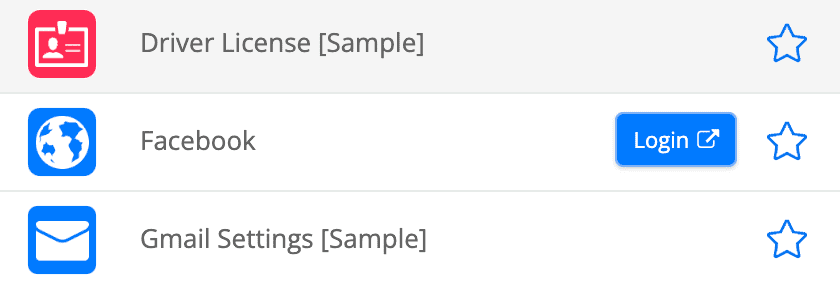
Even then, autofill with SplashID is not a seamless process. SplashID will not recognize your account and autofill your information when you arrive at a login page. Instead, you must navigate to the browser extension, find your account, and click on the “login” button, as pictured above.
While I much prefer password managers to autofill my login information upon entering a recognized site, this function isn’t bad, per se. Functionally, it eliminates the need to navigate to any saved websites. With the click of a button, it will take you to the website and log you in. However, it’s still unusual enough that it takes a while to get used to.
That said, due to the clunkiness of SplashID’s browser extension in logging into your vault, this is far from an efficient process. SplashID does not store or autofill payment information, another feature most password managers offer.
SplashID Security
Overall: (4.0)
SplashID uses 256-bit AES encryption, as any password manager worth its salt should. While this encryption is widely accepted as unbreachable, it’s also the industry standard.
Where a password manager sets itself apart in terms of security are features like 2FA, dark web monitoring, and other premium features. At SplashID’s price point, I would like to see dark web monitoring offered, but this feature isn’t available. I also find its 2FA functionality more limited than I’d prefer.
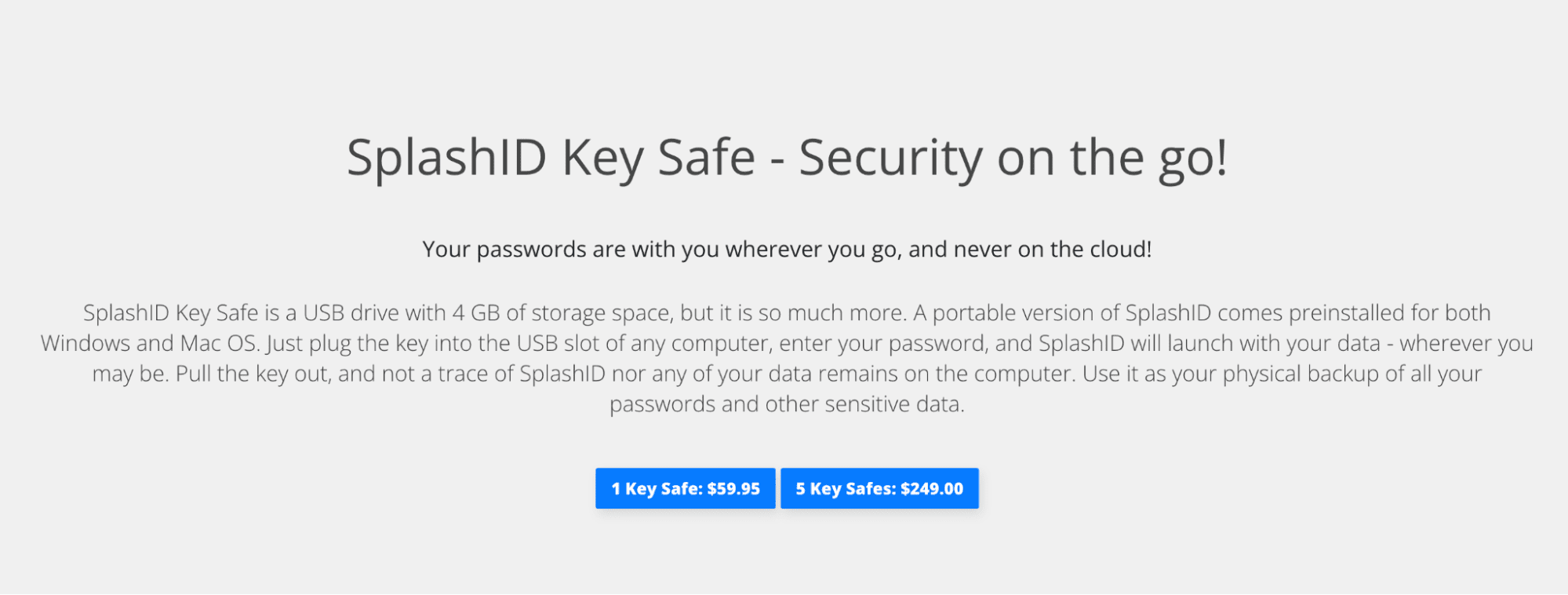
However, SplashID stands out in its offering of Key Safe. Essentially, you can have your information stored on a physical USB drive rather than on a device, server, or in the cloud. This is a great and secure way to protect your data from breaches — the only way to steal your data is to physically slip it out of your pocket.
That said, what you gain in security, you lose in efficiency. It’s inconvenient to carry around a USB and plug it into your computer whenever you need to log in. And this feature carries an additional one-time fee of at least $49.95. While I like to see password managers offer these high-end security features, it appeals to an admittedly niche user base.
SplashID Two-Factor Authentication
Overall: (4.0)
SplashID offers 2FA via SMS and email, and it’s easy to set up, but SplashID lacks more modern options.
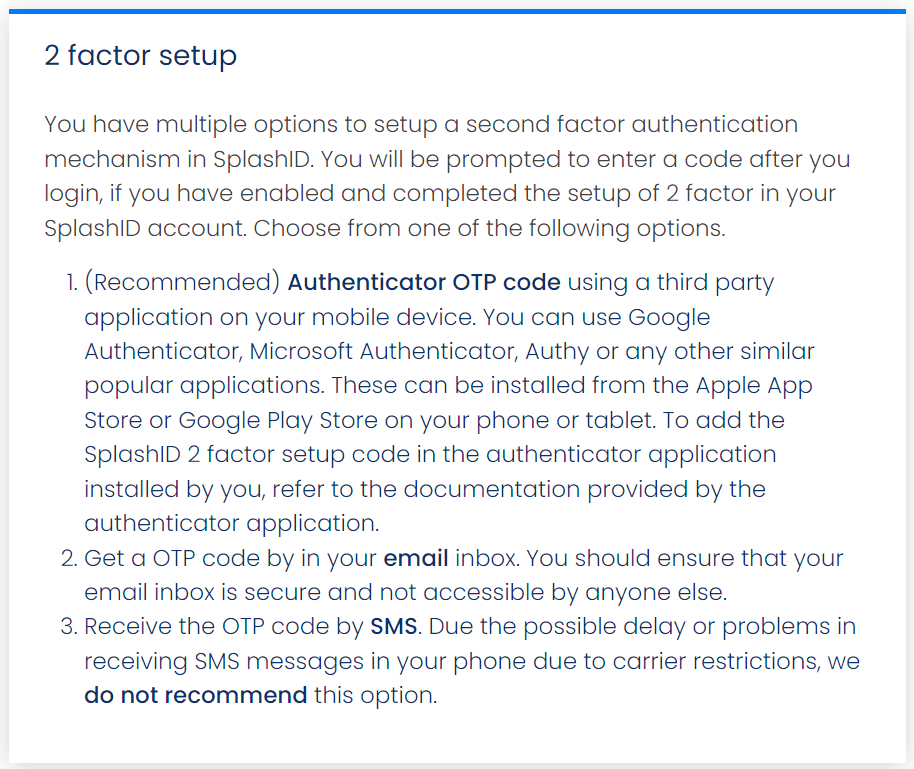
As far as 2FA goes, SMS and email are dated authentication methods. Typically, I like to see password managers at least offer 2FA via the authenticator app, and SplashID does. However, many premium password managers offer biometric 2FA. Biometric capabilities such as FaceID and fingerprints are so readily available on modern devices that password managers should be able to keep up.
Compare SplashID Alternatives
| Password manager | Details | Best features |
|---|---|---|
| SplashID Overall rating: (3.6) | Starting price: Free Platform compatibility: Android, iOS, Windows, macOS, Web (Chrome, Edge, Firefox, Safari) Security: AES 256-bit encryption, MFA |
|
| 1Password Overall rating: (4.8) Read our full 1Password review. Consider 1Password if: You’re seeking unlimited password management at a fair price. | Starting price: $2.99 per month Platform compatibility: Android, iOS, Linux, Mac, Web (Brave, Chrome, Edge, Firefox, Safari), Windows Security: AES 256-bit encryption, 2FA |
|
| Dashlane Overall rating: (4.7) Read our full Dashlane review. Consider Dashlane if: You’re only interested in a personal plan. | Starting price: Free Platform compatibility: Android, iOS, Mac, Web (Chrome, Edge, Firefox, Safari), Windows Security: AES 256-bit encryption, 2FA |
|
| Keeper Overall rating: (4.6) Read our full Keeper review. Consider Keeper if: You want to enjoy the feature of secure biometric logins. | Starting price: $2.91 per month Platform compatibility: Windows, MacOS, Linux, Android, iPhone, and iPad. Browser extensions for Safari, Opera, Firefox, Edge, Chrome Security: AES 256-bit encryption, PBKDF2 |
|
| RoboForm Overall rating: (4.5) Read our full RoboForm review. Consider RoboForm if: You want to sync your passwords through multiple platforms and won’t mind its compatibility with fewer platforms than 1Password. | Starting price: $1.99 per month Platform compatibility: Windows, Mac, iOS, and Android support for their respective major browsers, including Microsoft Edge Security: AES 256-bit encryption, 2FA |
|
| LastPass Overall rating: (4.4) Read our full LastPass review. Consider LastPass if: You want additional features and are willing to pay a high price for it. | Starting price: Free Platform compatibility: Windows, Mac, Linux, and mobile platform Security: Zero-knowledge security model |
|
| NordPass Overall rating: (4.3) Read our full NordPass review. Consider NordPass if: You don’t want different packages for your family and business. | Starting price: Free Platform compatibility: Windows, macOS, Linux, Android, iOS, and popular browsers, such as Google Chrome, Firefox, Edge, Brave, Opera, and Safari Security: XChaCha20 encryption algorithm and a zero-knowledge policy |
|
Frequently Asked Questions About SplashID
What are the cons to SplashID?
SplashID’s greatest drawback is its poor autofill capabilities. On top of that, it offers a disjointed UX which is disorganized and clunky.
Is it worth paying for SplashID?
While I think there are better options, enough people pay for this service to keep it afloat. I encourage you to take it for a spin and see if SplashID — with a free version and 30-day trial of the premium plan — is for you.
Is SplashID better than 1Password?
Despite similar price tags, 1Password is a far better platform due to its exceptional technology, UX, and customer support.
How safe is SplashID?
SplashID utilizes industry-standard 256-bit AES encryption as well as no-knowledge architecture. Your data will be safe with SplashID.
What Is SplashData the Company?
Founded in 2000, SplashData provides security applications and services to over 1 million users worldwide. Its marquee product SplashID was introduced in 2010. The company is headquartered in Los Gatos, California.
- 155 N Santa Cruz Ave., Suite E-210, Los Gatos, CA 95030
- Official website
- YouTube
How I Rated SplashID
Our rating process involves a thorough and detailed study of the various features stacked against the competition. I looked at the multiple facets and features provided by SplashID compared to other significant industry players through direct testing to ensure an accurate rating. I’ve also applied my experience using SplashID to provide a user’s perspective.
I signed up for a plan with SplashID to test:
- Plan value: Most password managers offer various subscription plans from free to around $20 per month. While free plans may be sufficient for some, those that need more functionality may prefer paid plans.
- Platform compatibility: You likely access your online accounts from multiple devices, including desktops, laptops, tablets, phones, as well as through different web browsers. Your password manager should be compatible with various devices, operating systems and browsers, and sync seamlessly between them all.
- UX: This is how you interface with all the features and functions of your new password manager — if it’s bad, you’ll be less likely to use the service. While this is a highly subjective category and some will disagree, it’s important to provide an overview based on my experience.
- Form filling: A password manager doesn’t have to include form-filling, but it’s somewhat standard and the ease with which it performs that function can be the deciding factor in which password manager you ultimately choose.
- Security: Since a password manager is first and foremost a security tool, it should come with all of the most up-to-date standard security features. This includes the highest level of available encryption (256-bit AES with PBKDF2-HMAC-SHA512); 2FA, such as biometric logins or multi-factor authentication, and a password generator.
- Two-factor authentication (2FA): Used all over the internet to protect your accounts, this is quickly becoming a standard security practice. 2FA is a great way to secure more sensitive accounts to ensure they’re not breached.
Learn more about our review methodology.

About The Password Manager, Gunnar Kallstrom:
Kallstrom is a Cyber Team Lead for a DOD contracting company in Huntsville, Alabama, and has also worked as a computer network defense (CND) Cyber Analyst. An author and content creator for a cybersecurity academy, Kallstrom spent nearly 15 years in the Army as a musician before entering the cybersecurity field.
He holds a bachelor’s degree in music from Thomas Edison State University and a master’s in organizational development and leadership from the University of the Incarnate Word.
Kallstrom has completed several Computing Technology Industry Association (CompTIA) courses, including Security+, Network+, A+ Core 1, and A+ Core 2. He earned a CompTIA Security+ Certification. Additionally, he has completed the Cyber Warrior Academy program with more than 800 hours of hands-on, intensive, and lab-driven technical training in cybersecurity methods and procedures.
Passionate about all things cyber, Kallstrom was a speaker on a panel at the 2022 InfoSec World conference, giving a talk entitled “Hacking into a Cyber Career – True Stories.” Kallstrom is also a mentor to entry-level cybersecurity candidates seeking to break into the field. When he’s not working, he still enjoys playing guitar and fishing (not phishing).
Table of Contents
- SplashID: A Quick Overview
- What Are the Pros and Cons of SplashID?
- Who Should Choose SplashID?
- SplashID Plans and Pricing
- SplashID Platform Compatibility
- SplashID UX
- SplashID Form Filling
- SplashID Security
- SplashID Two-Factor Authentication
- Recent Improvements to SplashID
- Compare SplashID Alternatives
- Frequently Asked Questions About SplashID
- How I Rated SplashID
